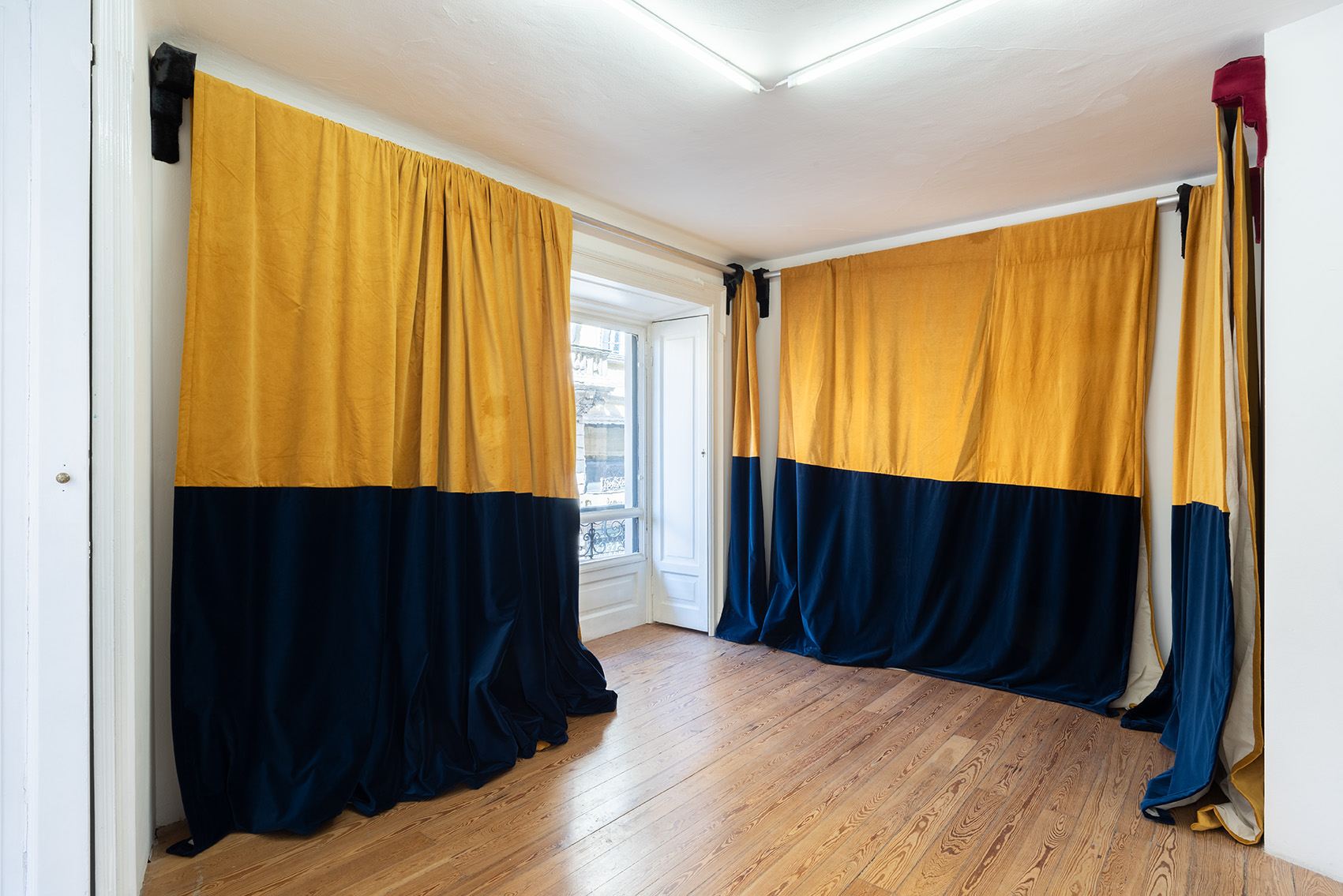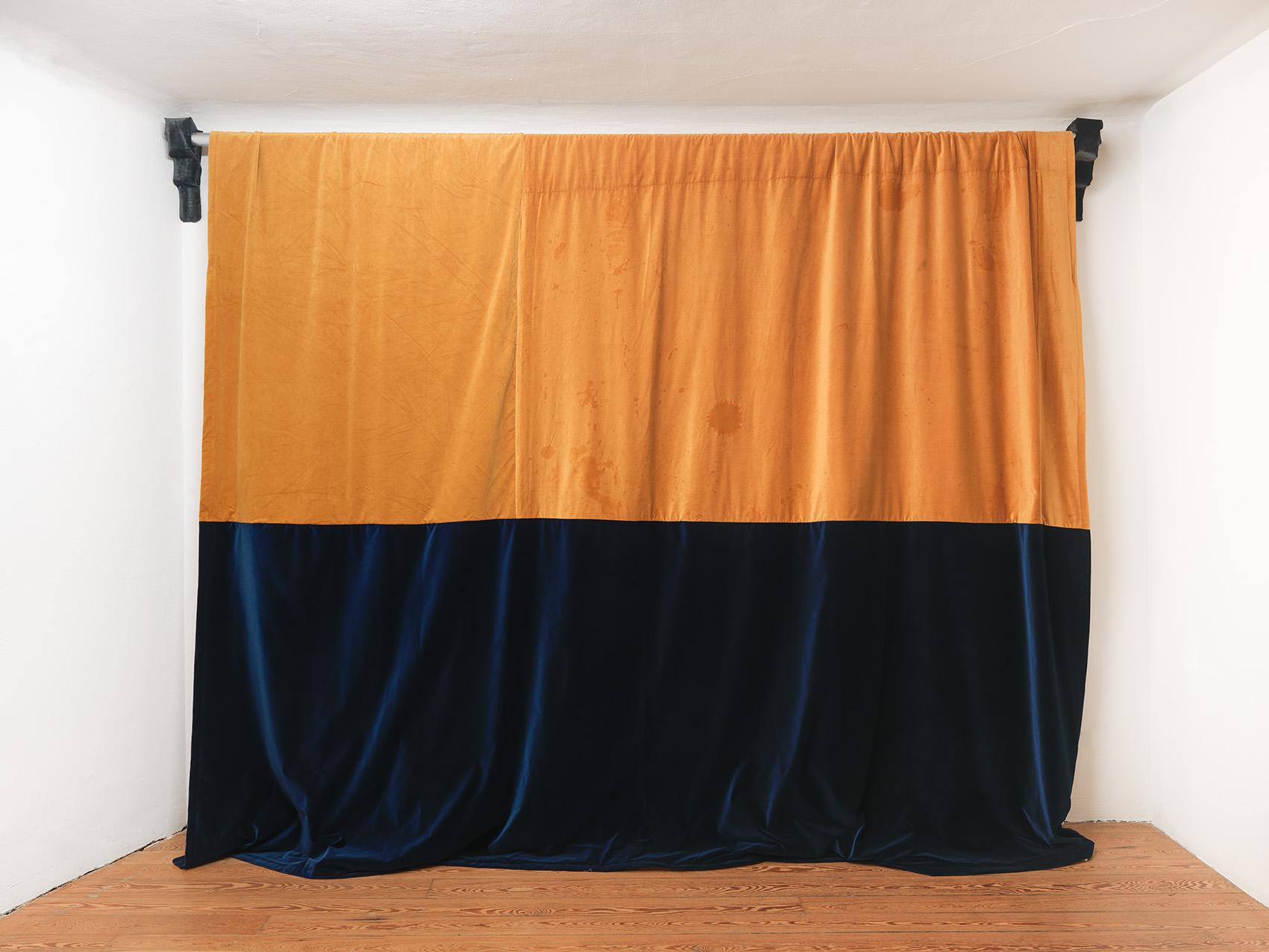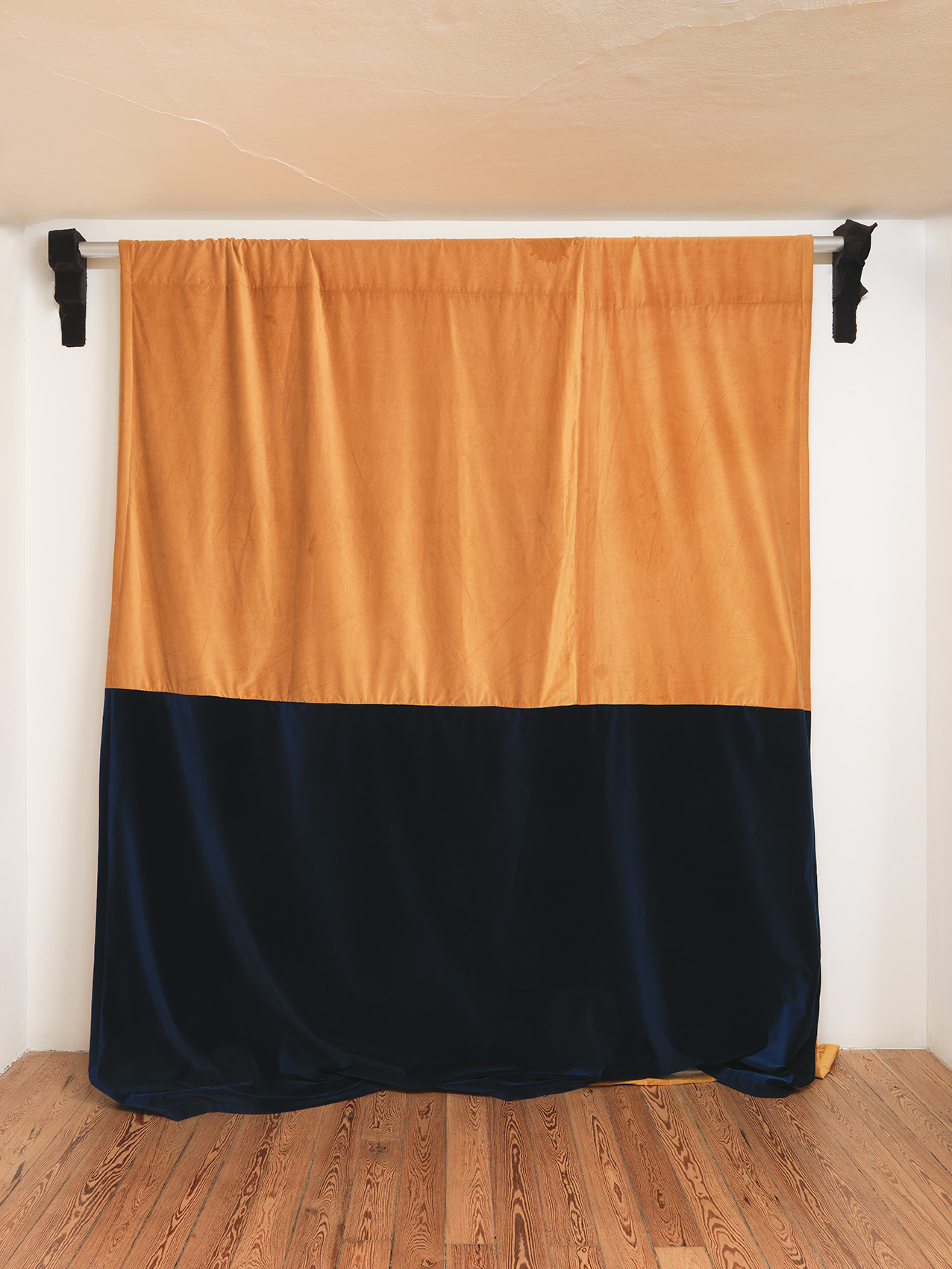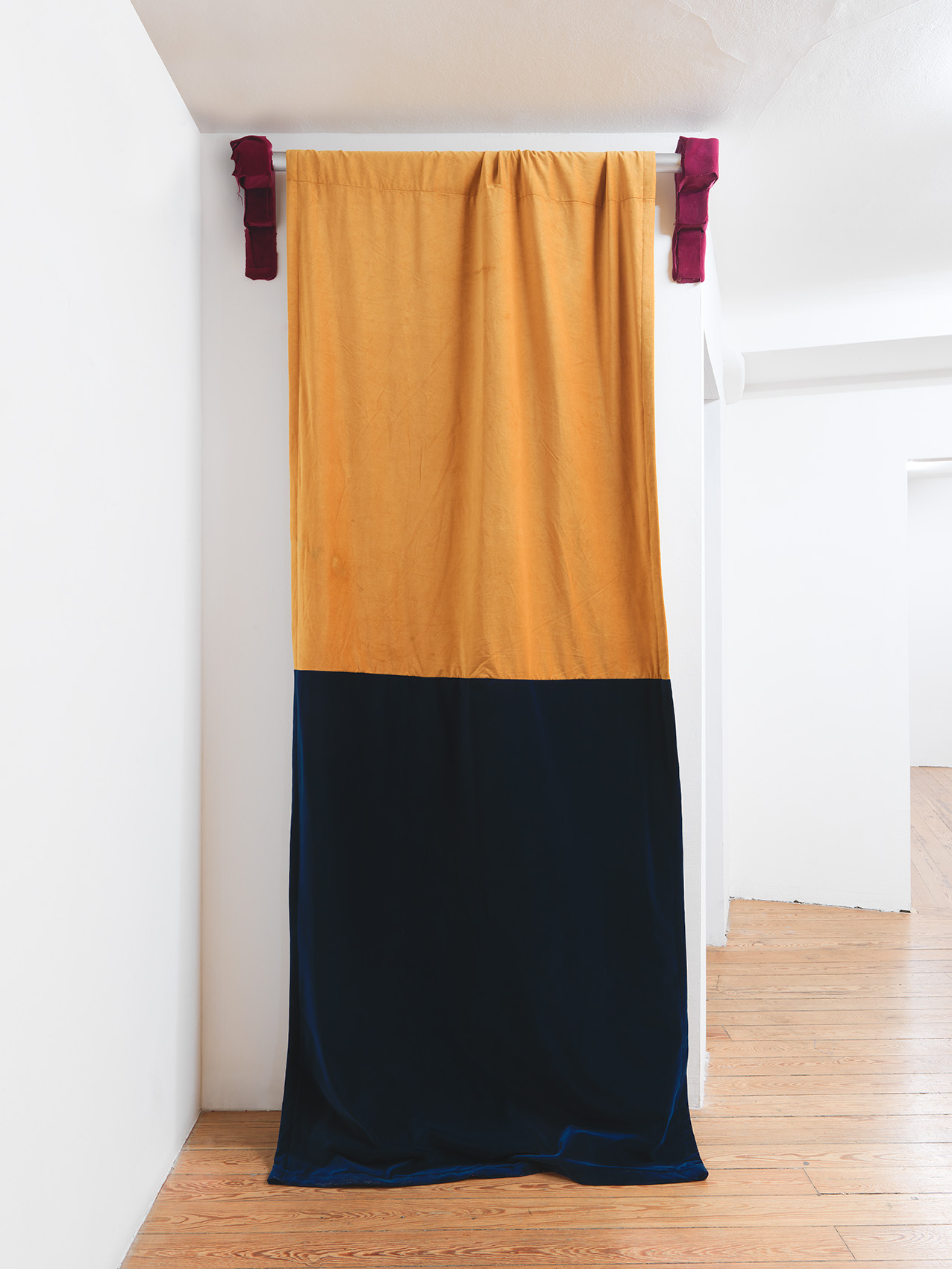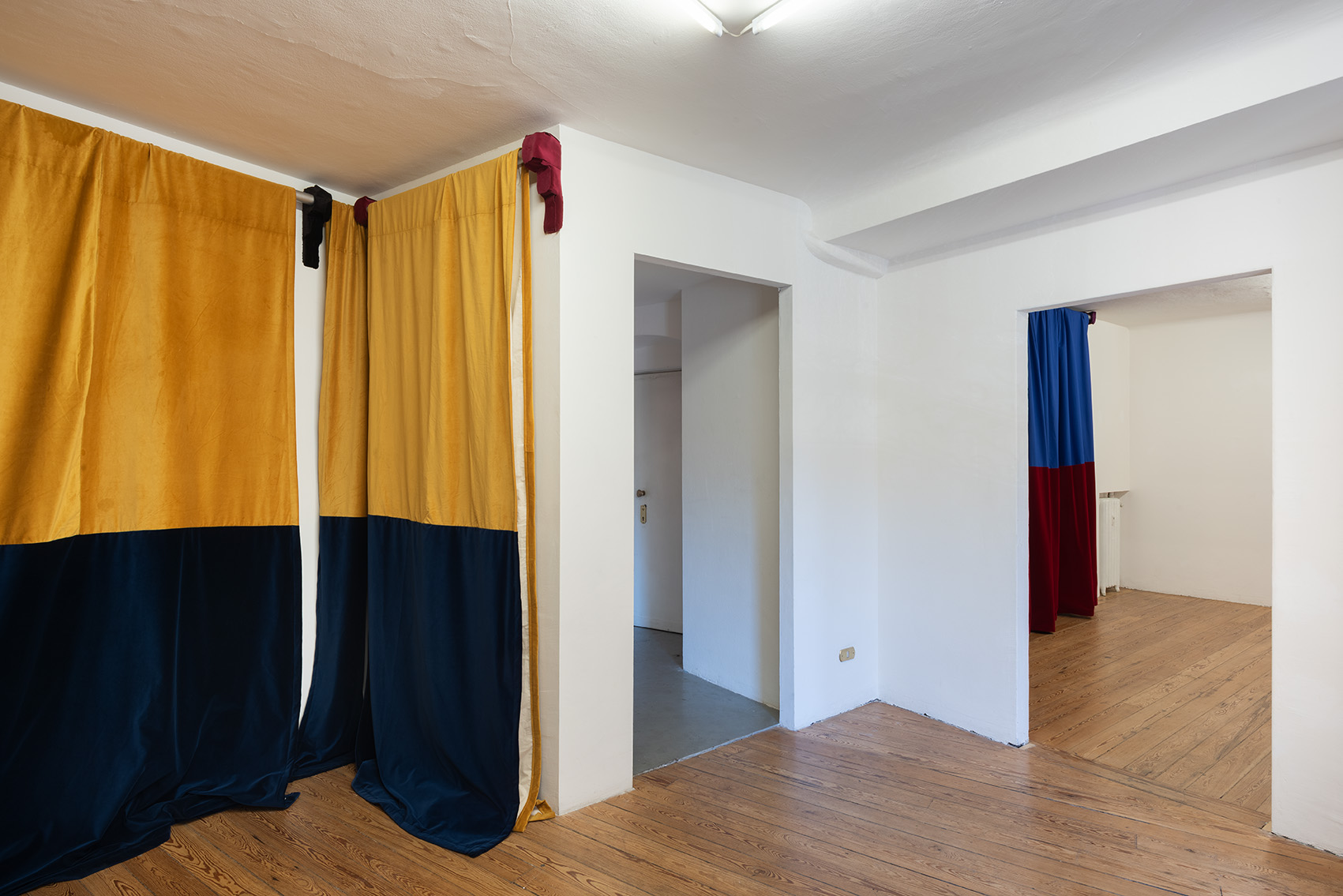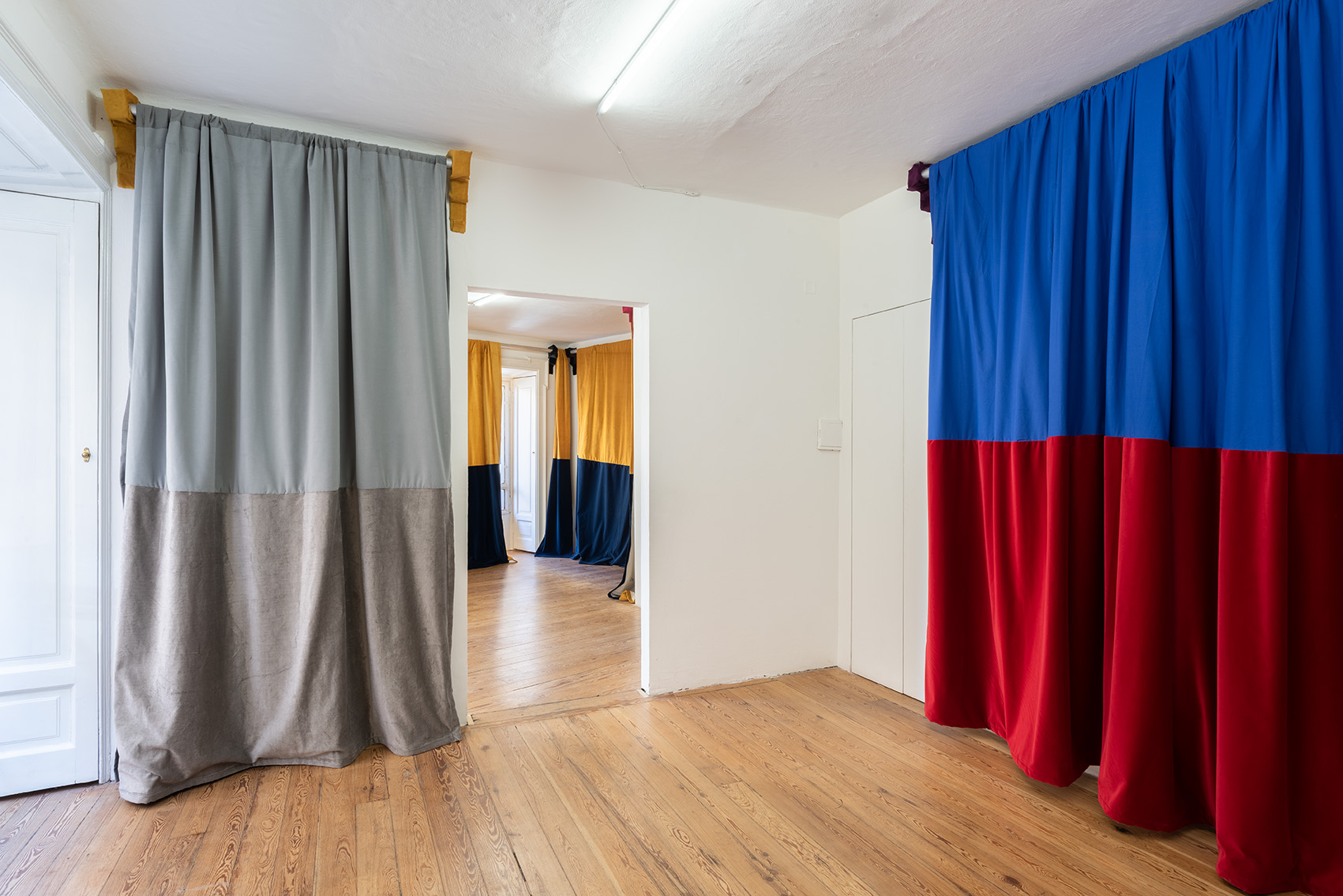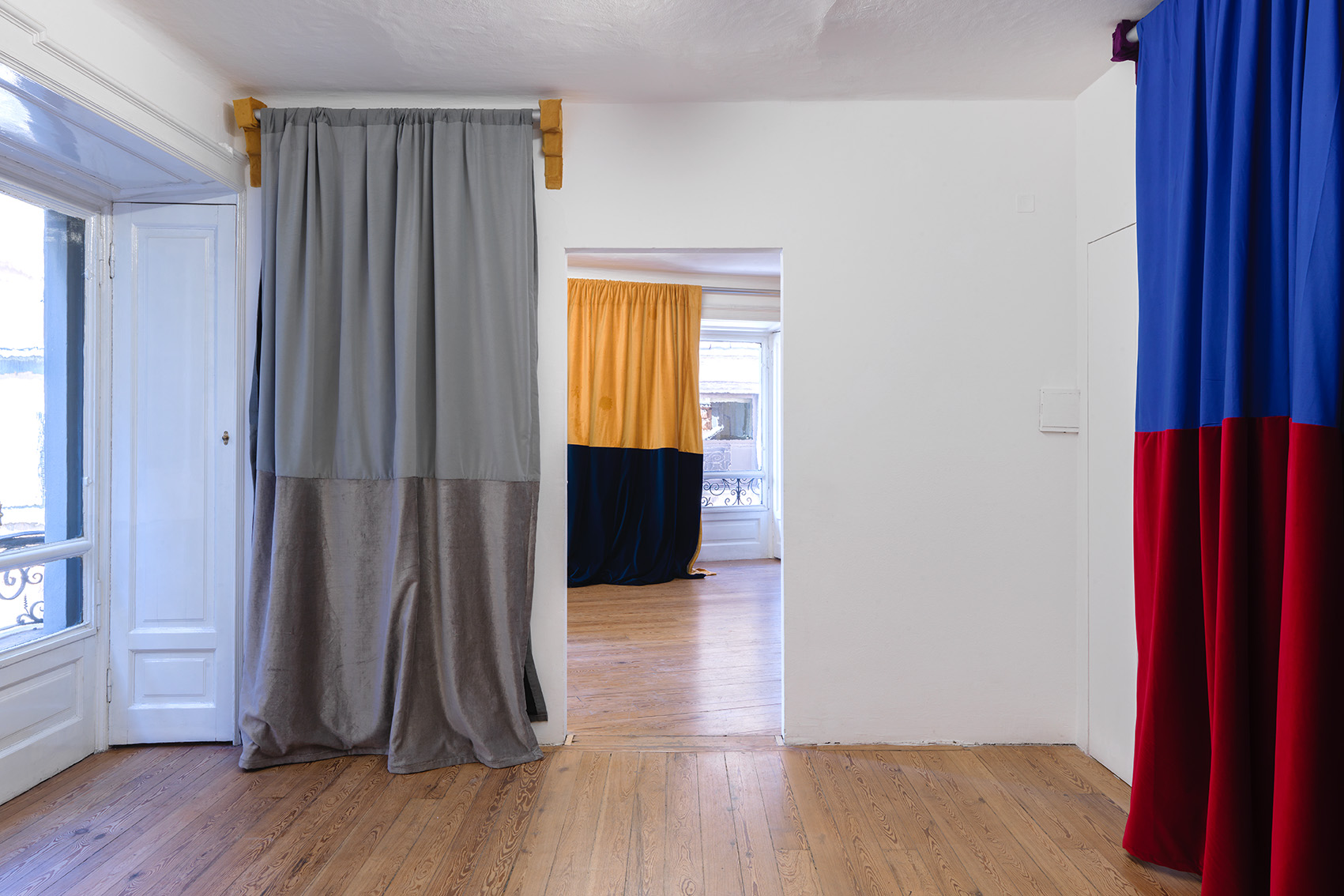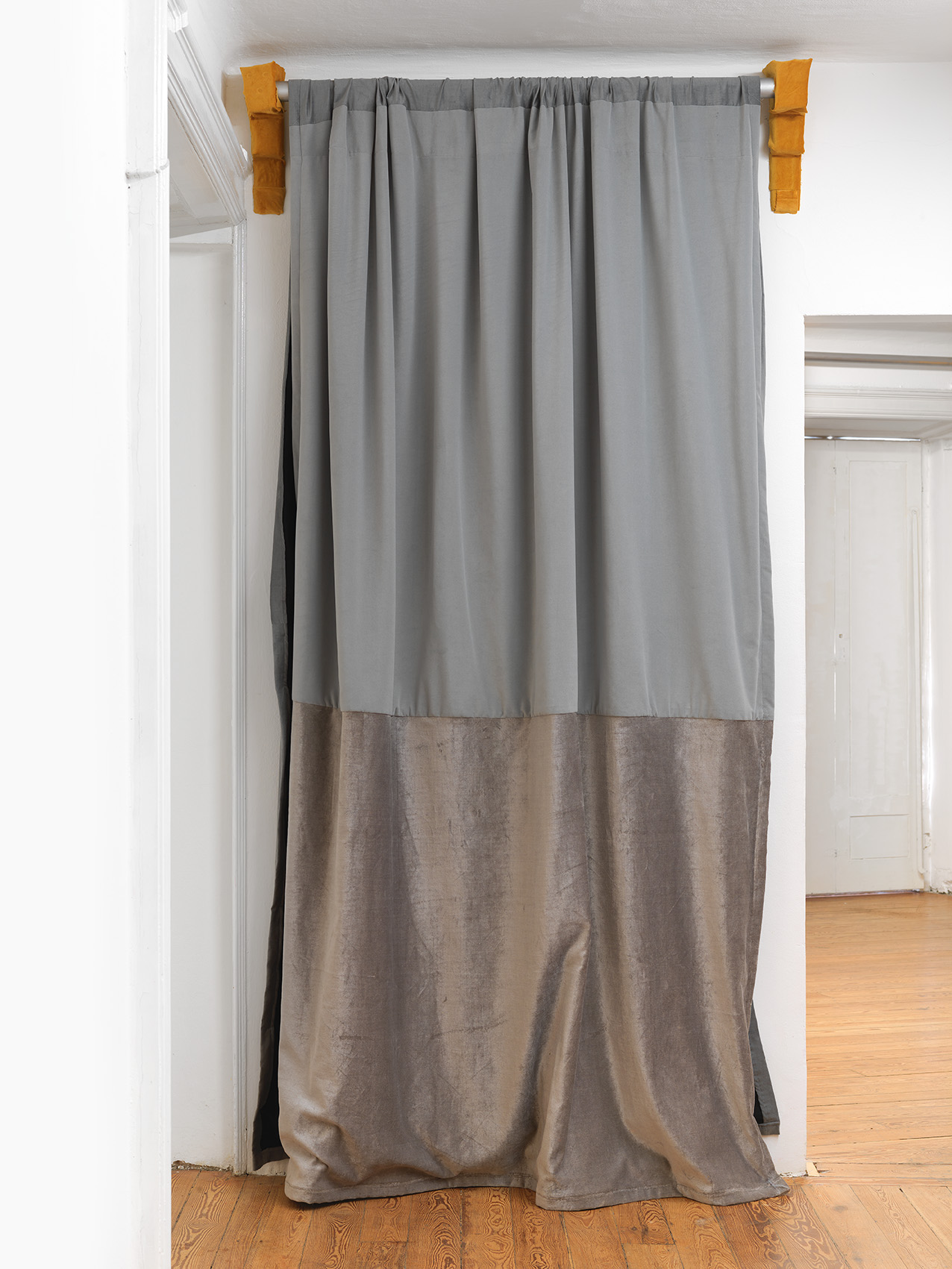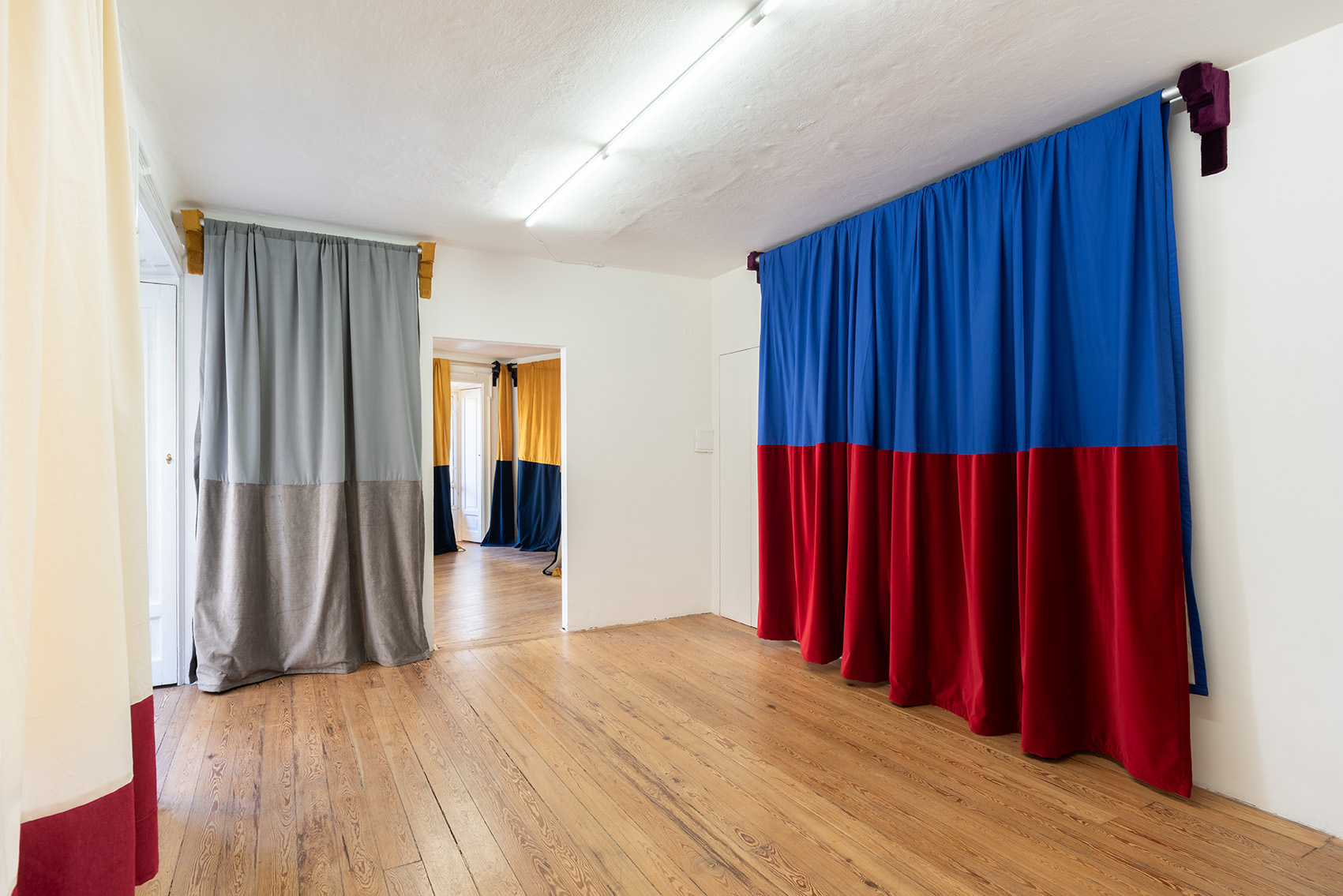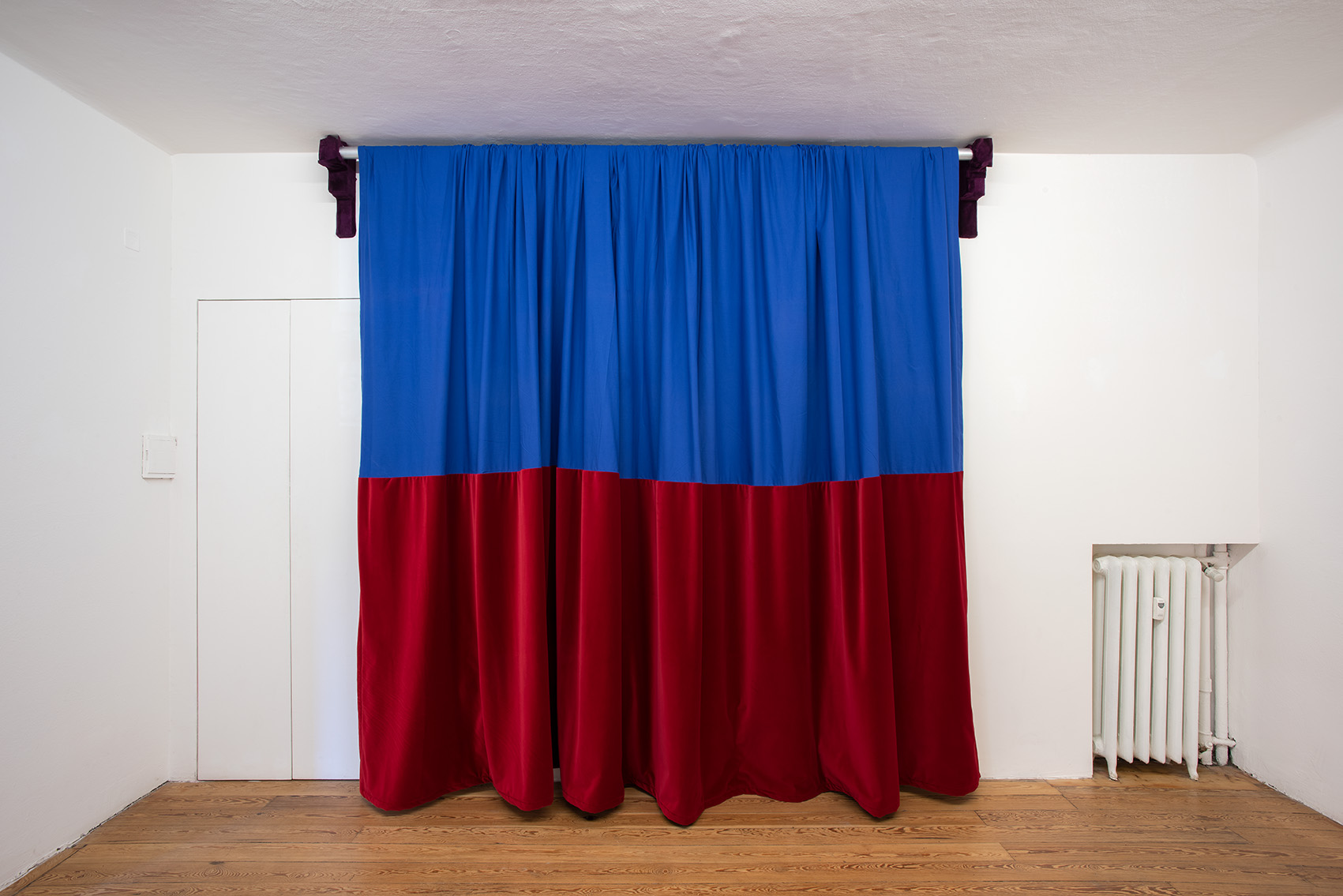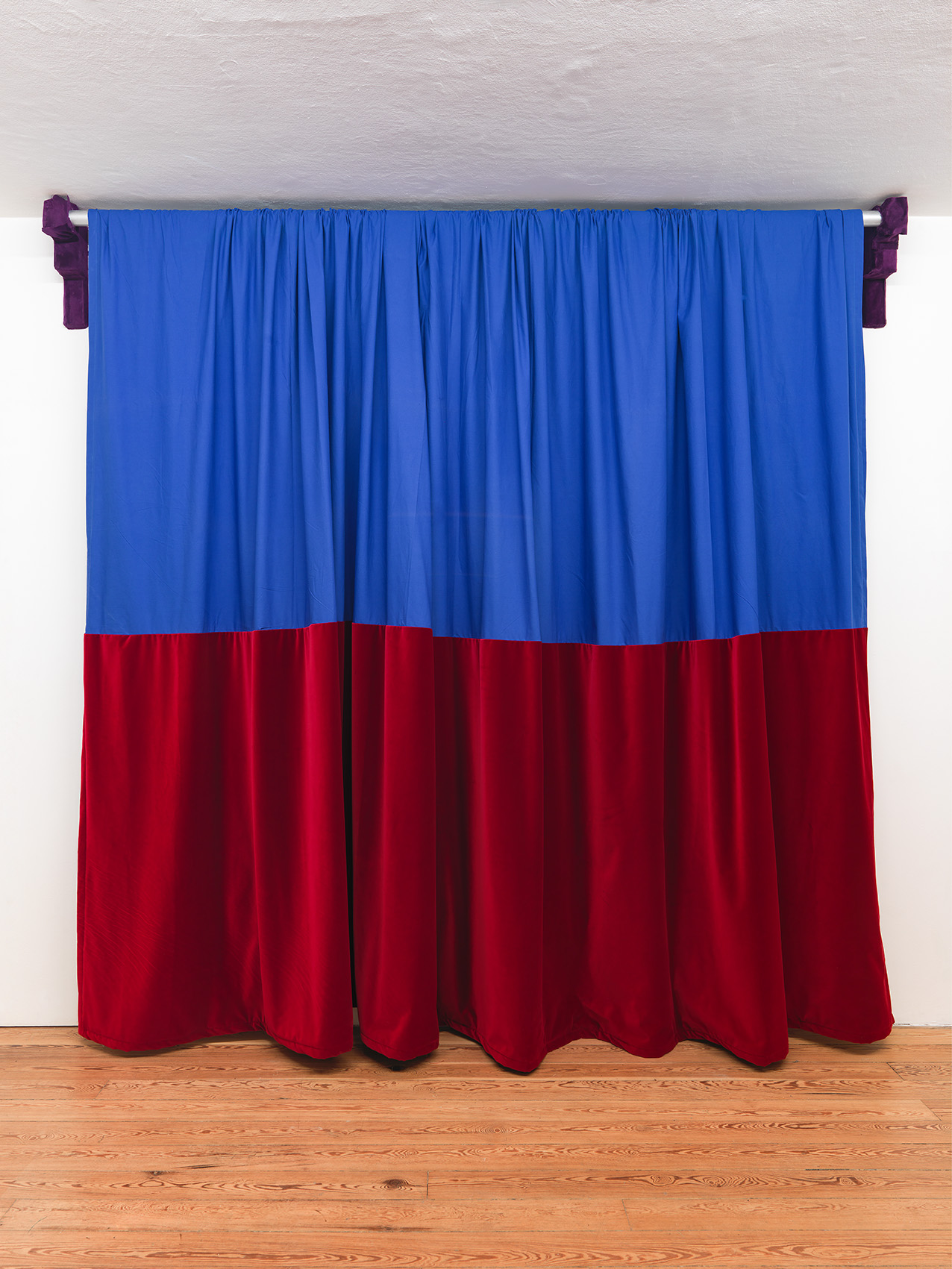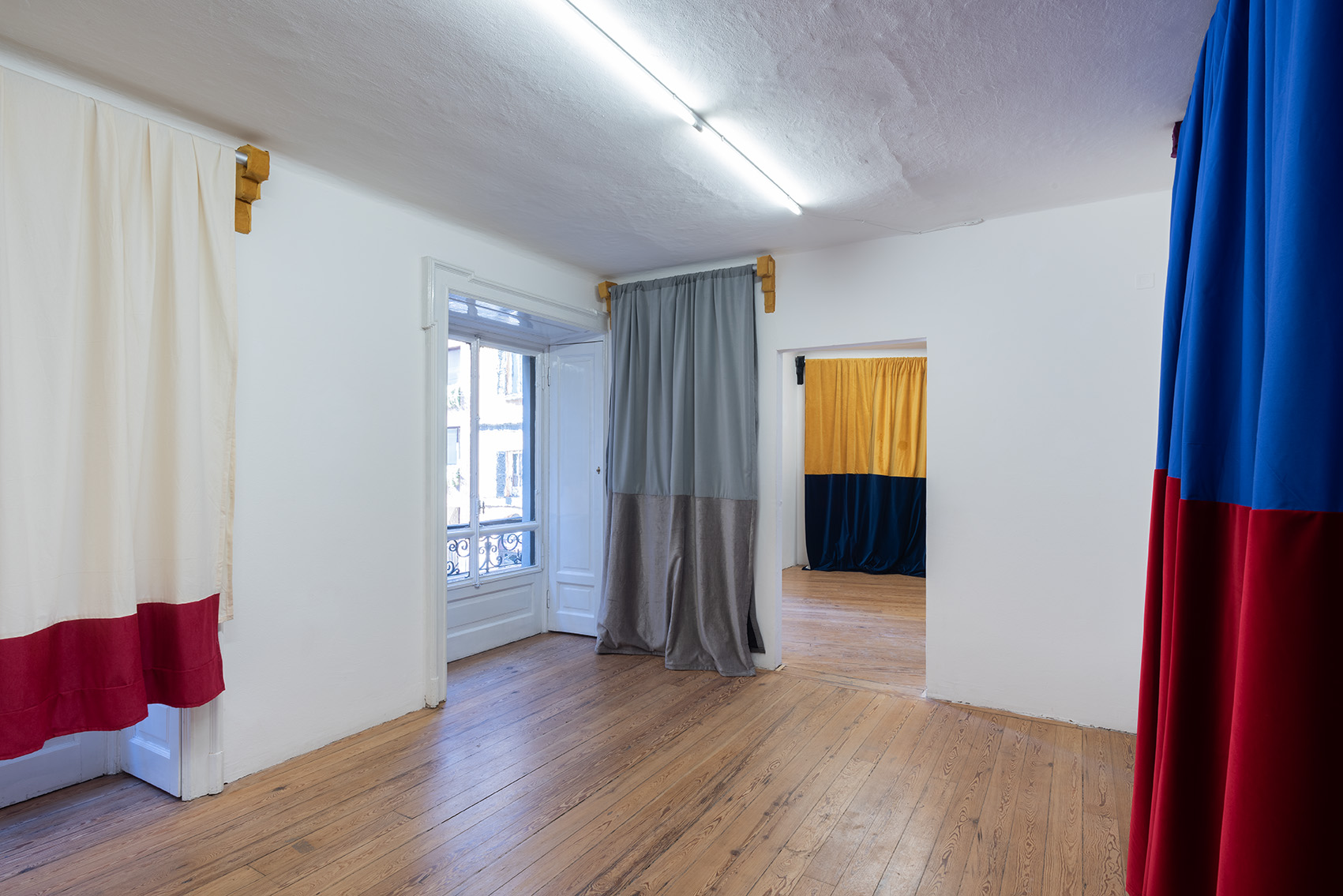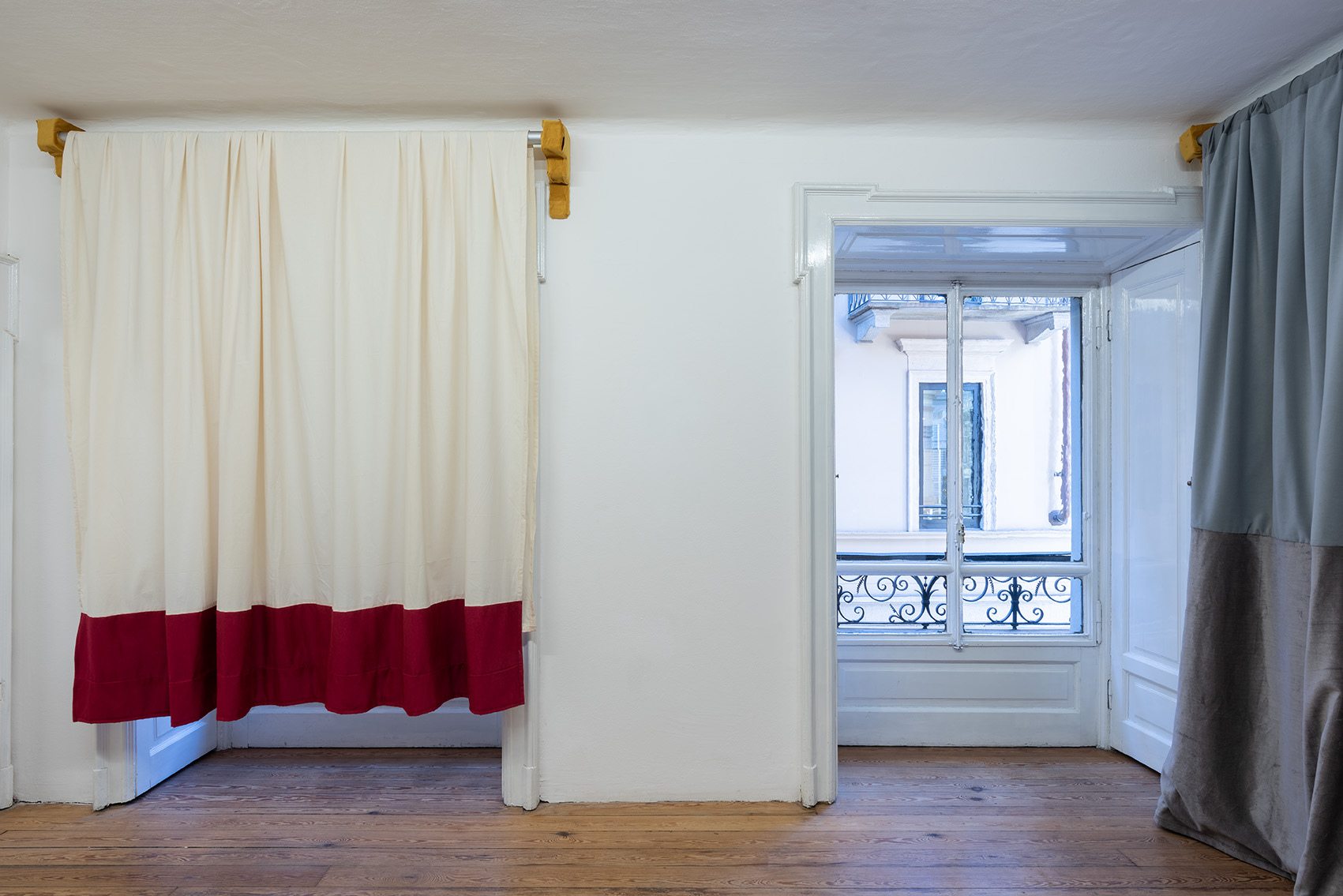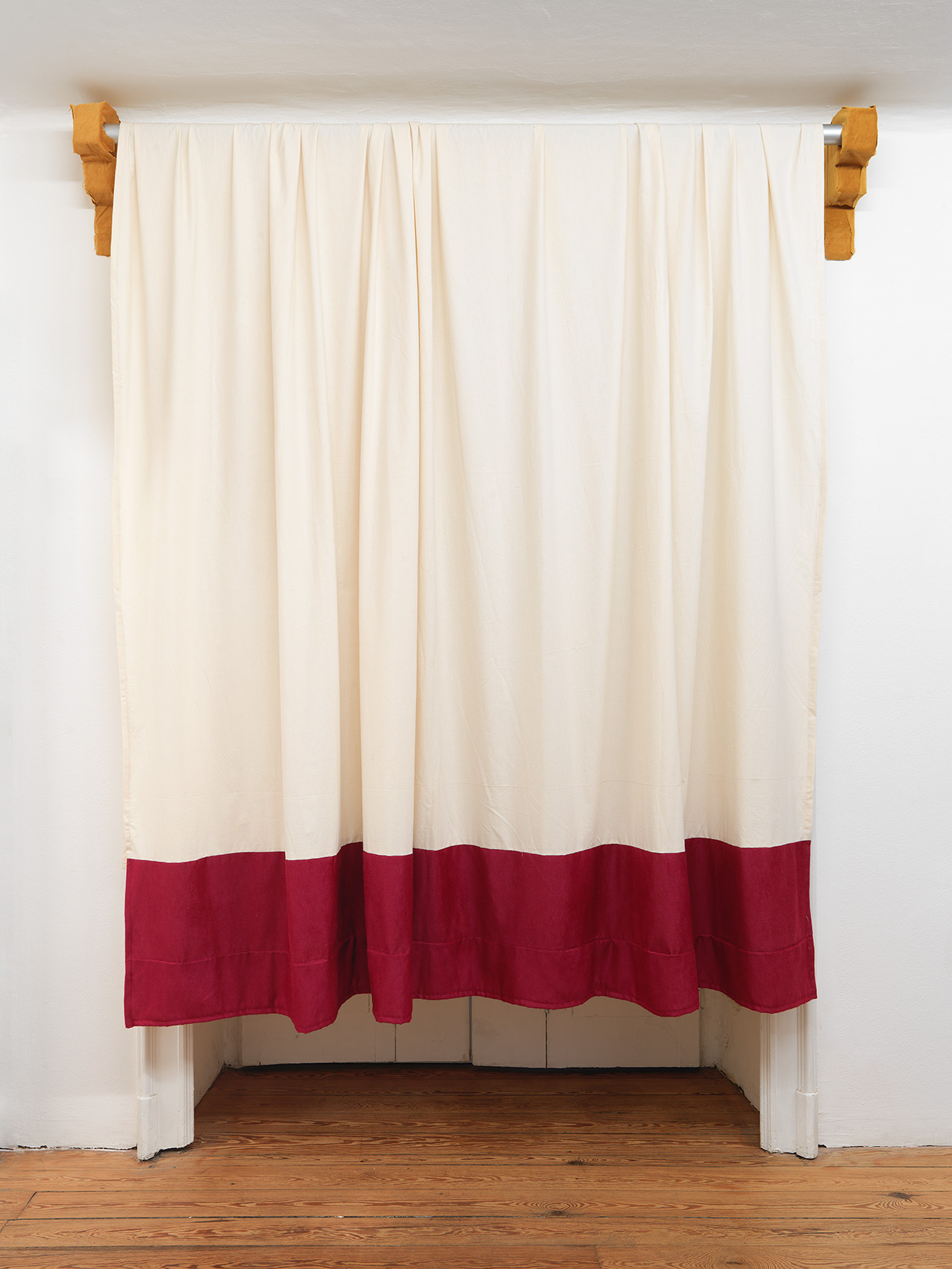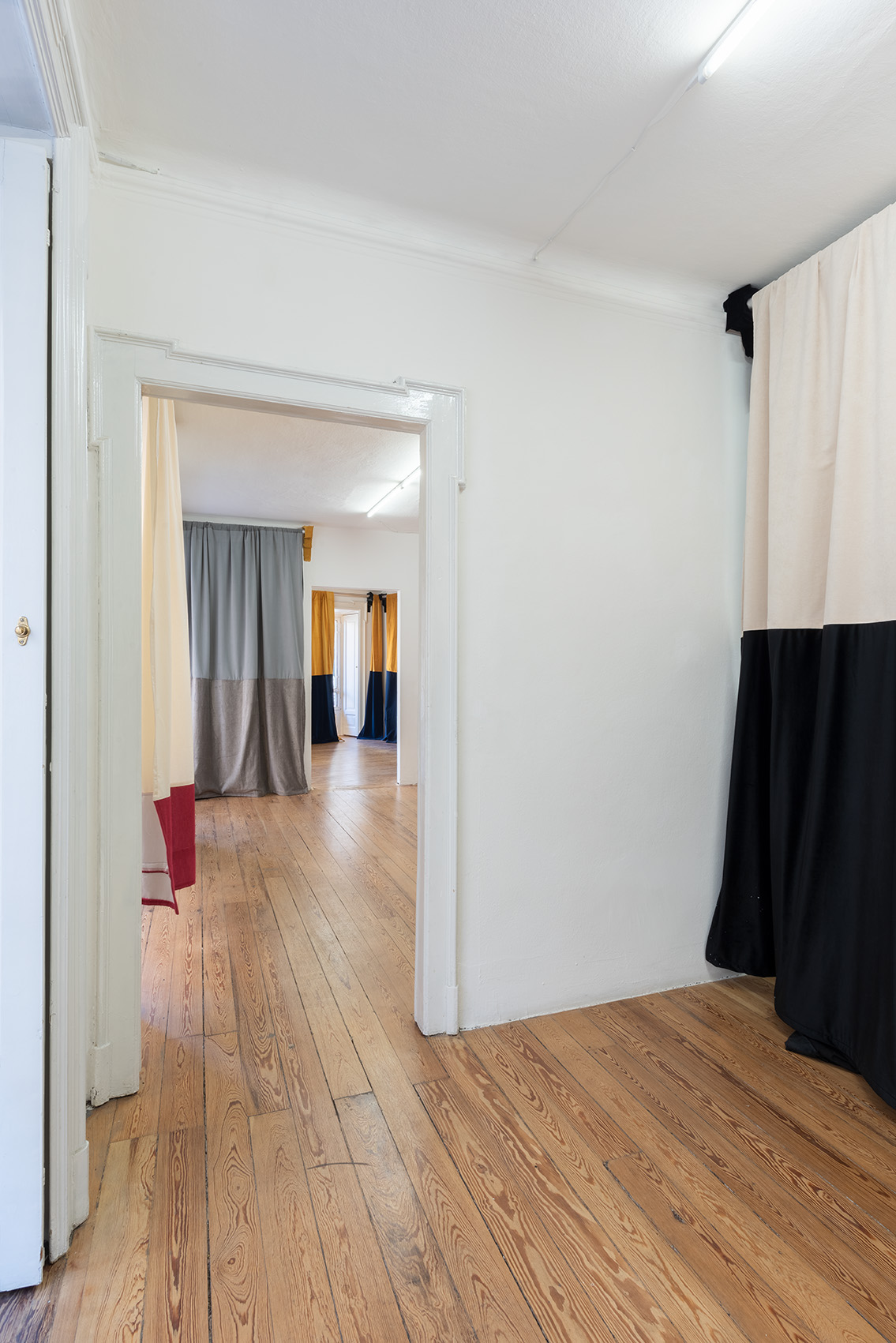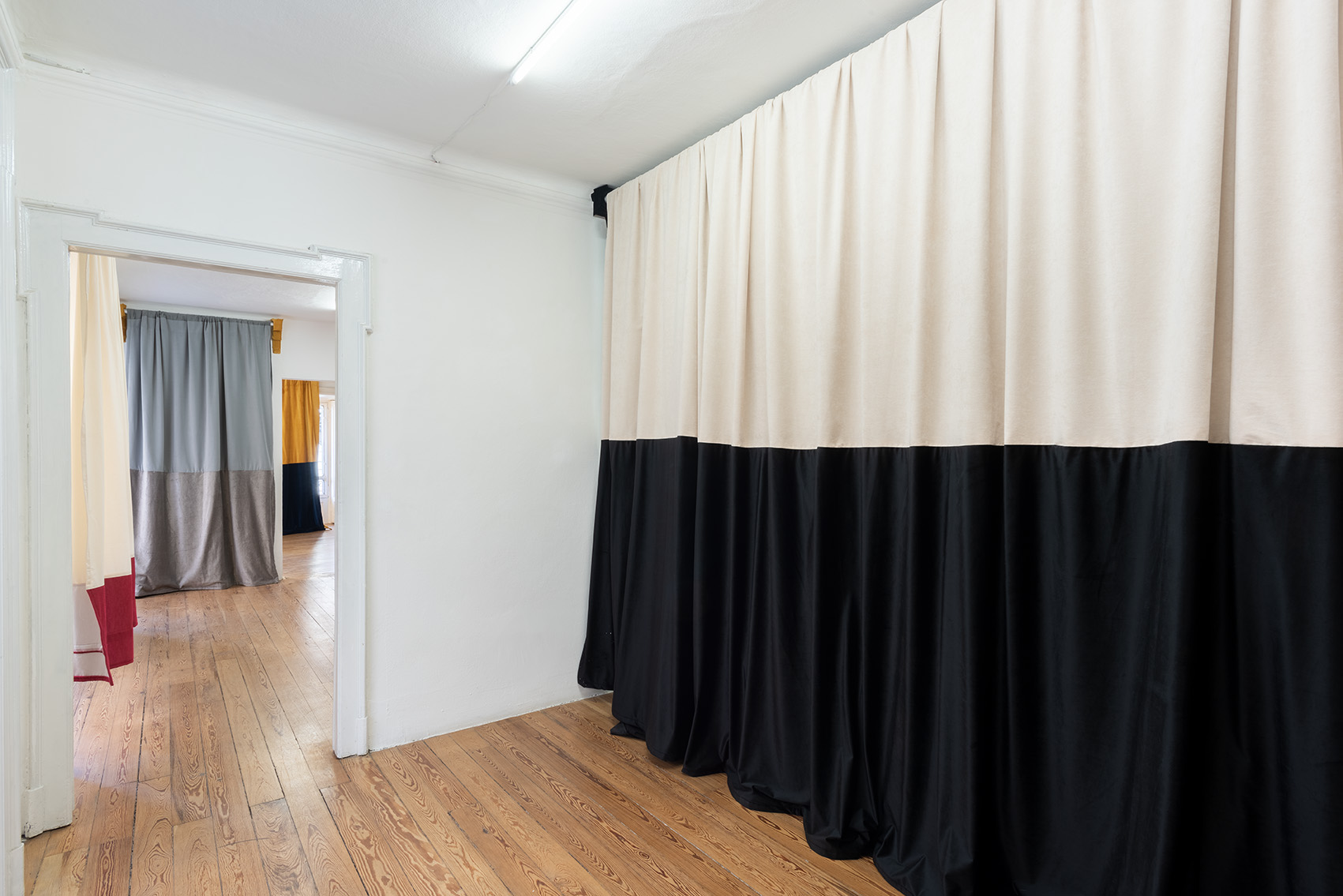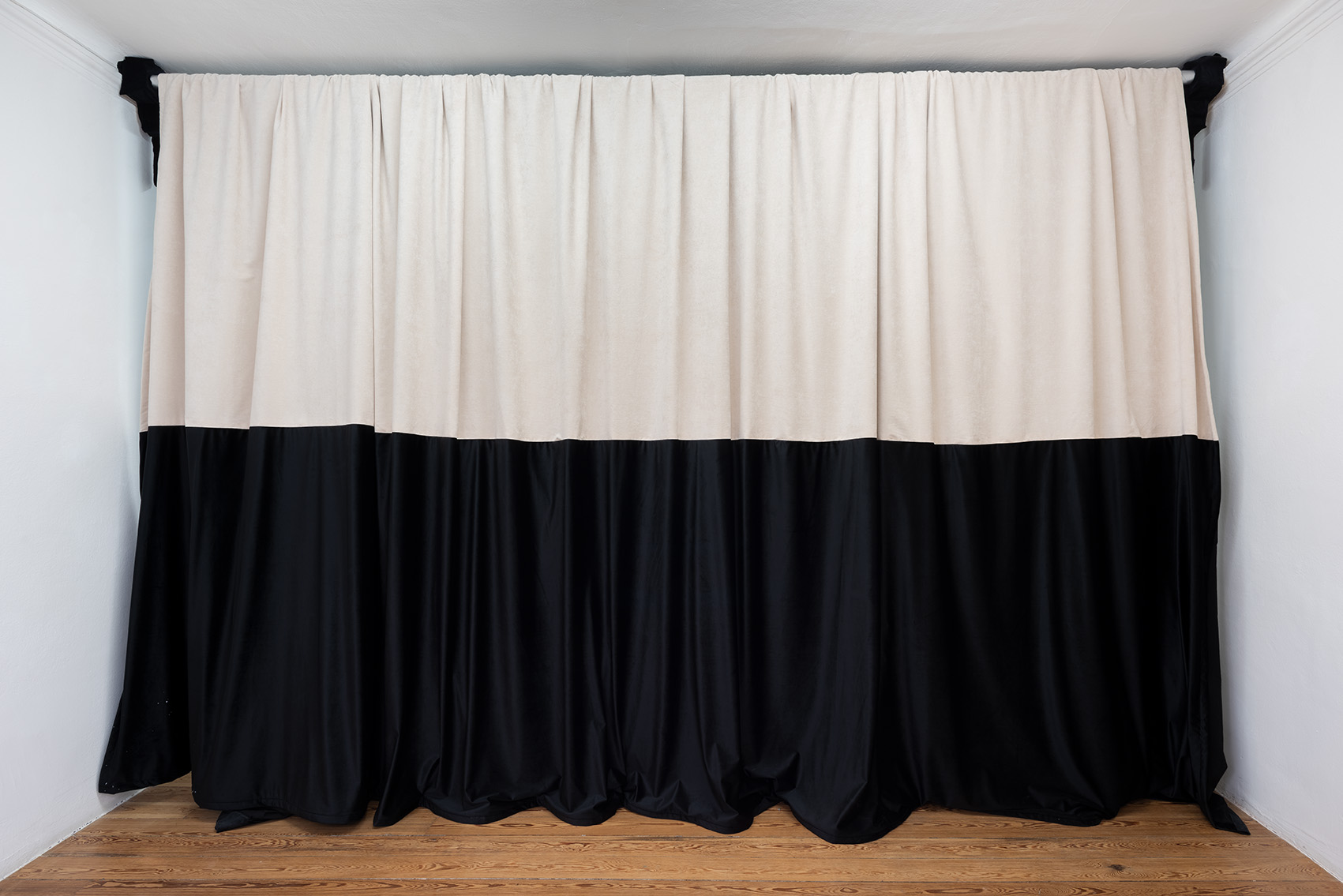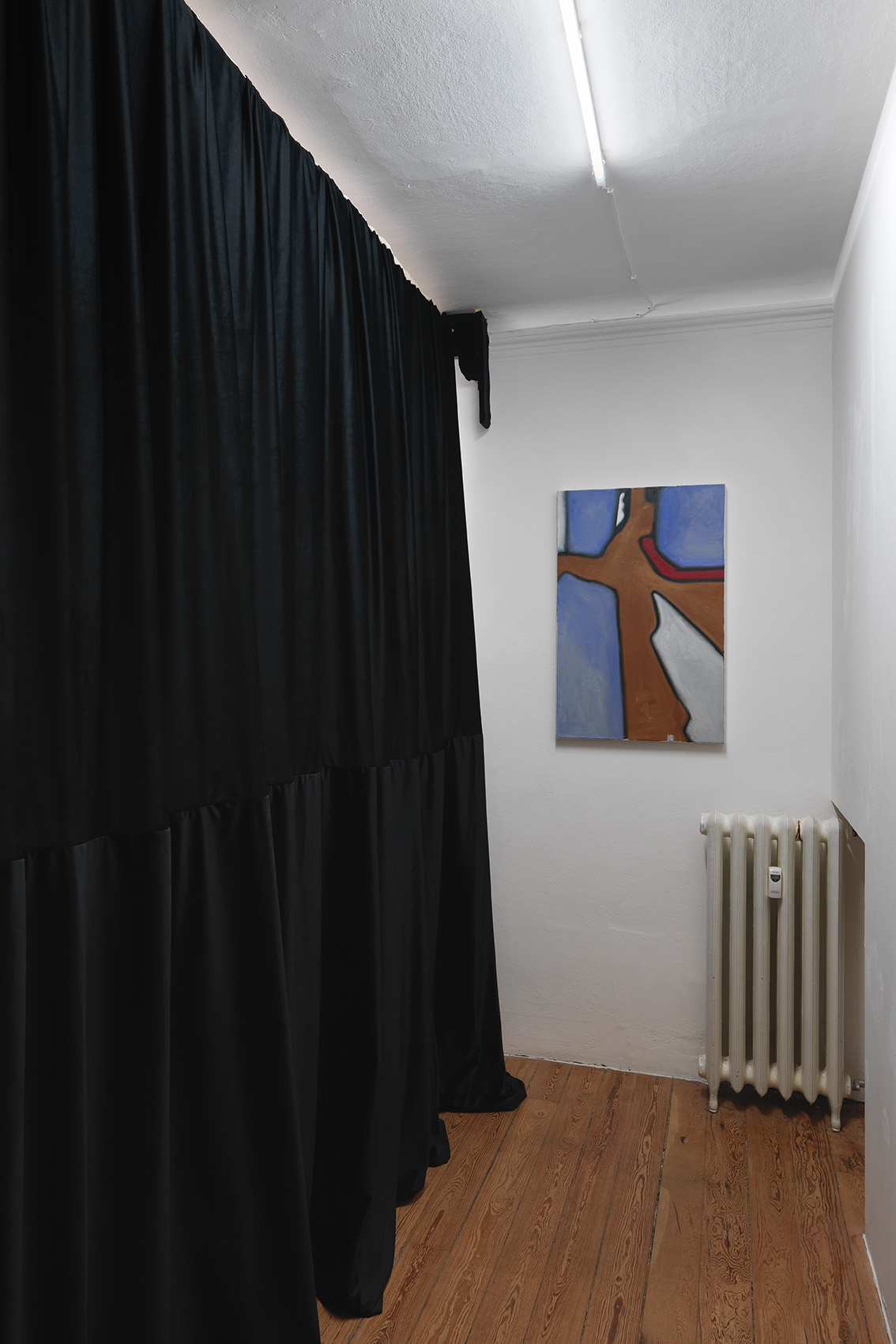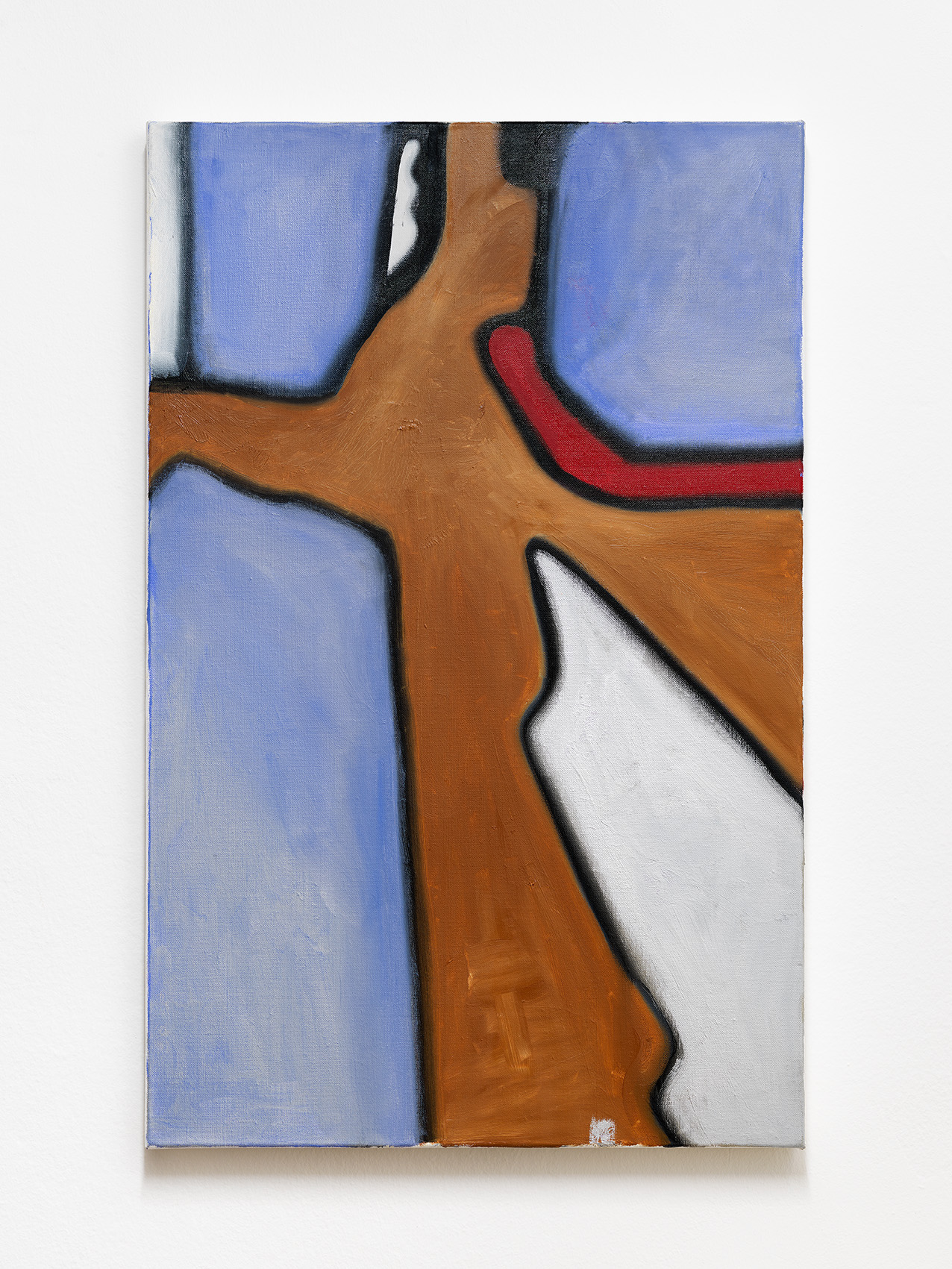Emil Michael Klein
Curtains
March 15 - April 19, 2019
Emil Michael Klein, Curtains, 2019, installation view, Galleria Federico Vavassori, Milan
Emil Michael Klein
Fabric Work, 2019
Velvet, cotton, wood, aluminium, lacquer
Dimensions variable
Emil Michael Klein
Fabric Work, 2019
Velvet, cotton, wood, aluminium, lacquer
Dimensions variable
Emil Michael Klein
Fabric Work, 2019
Velvet, cotton, wood, aluminium, lacquer
Dimensions variable
Emil Michael Klein, Curtains, 2019, installation view, Galleria Federico Vavassori, Milan
Emil Michael Klein, Curtains, 2019, installation view, Galleria Federico Vavassori, Milan
Emil Michael Klein, Curtains, 2019, installation view, Galleria Federico Vavassori, Milan
Emil Michael Klein
Fabric Work, 2019
Velvet, cotton, wood, aluminium, lacquer
Dimensions variable
Emil Michael Klein, Curtains, 2019, installation view, Galleria Federico Vavassori, Milan
Emil Michael Klein, Curtains, 2019, installation view, Galleria Federico Vavassori, Milan
Emil Michael Klein
Fabric Work, 2019
Velvet, cotton, wood, aluminium, lacquer
Dimensions variable
Emil Michael Klein, Curtains, 2019, installation view, Galleria Federico Vavassori, Milan
Emil Michael Klein, Curtains, 2019, installation view, Galleria Federico Vavassori, Milan
Emil Michael Klein
Fabric Work, 2019
Velvet, cotton, wood, aluminium, lacquer
Dimensions variable
Emil Michael Klein, Curtains, 2019, installation view, Galleria Federico Vavassori, Milan
Emil Michael Klein, Curtains, 2019, installation view, Galleria Federico Vavassori, Milan
Emil Michael Klein
Fabric Work, 2019
Velvet, cotton, wood, aluminium, lacquer
Dimensions variable
Emil Michael Klein, Curtains, 2019, installation view, Galleria Federico Vavassori, Milan
Emil Michael Klein
Untitled, 2019
Oil on canvas
92 x 58 cm
- 2025
-
2024
-
Giangiacomo Rossetti
Squeeze
November 29, 2024 - January 10, 2025 -
Ganz kleine
November 6 - November 22, 2024 -
Kaspar Müller
when we turn, we reappear
September 18 - October 18, 2024 -
Gianni Piacentino
June 25 - July 25, 2024 -
Vincent Murnaghan
Tuscan Landscape Painting
May 22 - June 18, 2024 -
claude rutault
March 12 - April 26, 2024
-
-
2023
-
The 3-second rule of thumb
Curated by Kaspar Müller
December 15, 2023 - February 2, 2024 -
Daniele Milvio
Le Faremo Sapere.
September 21 - October 27, 2023 -
Charlemagne Palestine, C'ERAA UNAAA VOLTAAA CHARLEWORLDDD
June 6 - July 7, 2023 -
Bill Hayden
café Uranus
May 4 - 31, 2023 -
Gianni Piacentino
March 22 - April 23, 2023
-
Emil Michael Klein
January 17 - February 17, 2023
-
-
2022
-
Osama Al Rayyan
knights
November 9 - December 16, 2022 -
Rochelle Goldberg
Ghost Centrale
September 16 - October 21, 2022 -
Beatrice Marchi
Who crushed the Evil Turtle?
June 8 - July 29, 2022 -
Kaspar Müller
Maintenance 2
March 30 - May 13, 2022 -
6 Bagatelles
Osama Al Rayyan
Beatrice Marchi
Daniel Murnaghan
Matthew Pang
Giangiacomo Rossetti
Cinzia RuggeriFebruary 15 - March 18, 2022
-
- 2021
-
2020
-
PaJaMa (Paul Cadmus, Jared French, Margaret Hoening French)
September 25 - November 15, 2020
-
Jared Madere
In the back of the restaurant I made him kiss the ring: Haunted House in the Key of New Years
Paths to G-ddess~ Tiny Dick Timmy Ricochet~ Live from the Geomancer’s Clit Ring
You say one thing and everyone acts like you don’t mean the opposite of it at the same time tooFebruary 13 - March 27, 2020
-
-
2019
-
Renata Boero
Tempo e Tempi
November 15, 2019 - January 10, 2020 -
Doriana Chiarini
IN GRANDE! Scultura a dismisura
Curated by Mariuccia CasadioSeptember 18 - October 31, 2019
-
Cinzia Ruggeri
la règle du jeu?
June 25 - August 9, 2019 -
Genoveva Filipovic
May 14 - June 20, 2019 -
Emil Michael Klein
Curtains
March 15 - April 19, 2019 -
Daniel Murnaghan
February 8 - March 9, 2019
-
-
2018
-
Dario Guccio
Urnas plebeyas, túmulos reales
December 14, 2018 - January 25, 2019 -
Michael Pollard, Eric Schmid
Life is good
October 26 - November 24, 2018 -
Daniele Milvio
A Milano non si usa
September 14 - October 12, 2018 -
Tra l'inquietudine e il martello
July 16 - August 11, 2018 -
Rochelle Goldberg
1000 "emotions"
May 25 - June 30, 2018 -
Green Tea Gallery at Federico Vavassori
Amore Atomico di Amore di Lava
Curated by United BrothersApril 18 - May 19, 2018
-
Bill Hayden and Greg Parma Smith
Legend of Festival and Enclosure
March 16 - April 15, 2018 -
Cinzia Ruggeri
Umbratile con Brio
Curated by Mariuccia Casadio
February 9 - March 10, 2018
-
-
2017
-
Kaspar Müller
Maintenance
December 21, 2017 - January 27, 2018 -
Lisa Ponti
IL
FOGLIO
È UNA STANZA
CHIUSA
MA
MERAVIGLIOSASeptember 15 - October 14, 2017
-
Genoveva Filipovic & Daniel Murnaghan
May 25 - July 1, 2017 -
Rosa Aiello
27 seasons
March 29 - April 29, 2017 -
Giangiacomo Rossetti
KRIS
February 16 - March 18, 2017 -
Matthias Gabi
January 12 - February 11, 2017
-
-
2016
-
Matthew Watson
Surplus to Requirements
November 25 - December 23, 2016 -
Dario Guccio feat. Andrea Cleopatria
Referendum sull'aeroplano
October 25 - November 19, 2016 -
Erika Landström
CONTROL I'M HER
September 9 - October 8, 2016 -
Benjamin Horns
May 25 - June 25, 2016 -
Emil Michael Klein
April 06 - May 14, 2016
-
-
2015
-
Daniele Milvio
Cacafoco
November 9 – December 5, 2015 -
Matteo Callegari
September 17 – October 24, 2015 -
Rochelle Goldberg
The Cannibal Actif
June 5 – July 4, 2015 -
Mélanie Matranga / Oliver Payne
Organized by Fredi Fischli and Niels Olsen
April 10 – May 9, 2015 -
Dario Guccio
Hammer, Chewing Gum, Evasion, Destruction
January 16 – February 14, 2015
-
- 2014
- 2013
- 2012
- 2011
EMIL MICHAEL KLEIN
CURTAINS
March 15 - April 13, 2019
In his fourth exhibition at Galleria Federico Vavassori, painter Emil Michael Klein is showing works in fabric. Curtains as he calls them. Over the past two years, EMK has shown various curtains as a contribution to group shows (Longtang, Kunsthalle Zürich) as well as providing them for parties and a bar. Now he has mounted his first solo exhibition with this new group of works, which have their origin in one of his first works: it was a 4 x 2,5 m curtain made of untreated cotton cloth – e.g. canvas, the material you stretch on a frame to paint on – and it was used to cover a gallery window in 2008 at Galerie Krupp in Basel. EMK has availed himself of canvas once again for the backs of the curtains displayed in the present exhibition. He uses the fabric like paint, and shows the curtains like tableaus on the wall.
The curtains are all made of velvet, a material with a wealth of connotations. Velvet evokes the capes of European royalty, luxurious interiors, but also cinemas and theatres – illusion. It is the stuff of superlatives: silk velvet e.g. is still the most expensive fabric in the world. It is a stock element of the iconography of Western art history, serving not only for pictorial purposes in paintings, but also as an important lighting design tool in the studio before the advent of artificial lighting: velvet seals off light well, so it can be used to precisely control the amount of light let in to the studio.
Velvet’s characteristic sheen is due to the fibers in the fabric. Velvet is made by weaving two layers of material together, then slicing them apart. Velvet panels never exceed 1.5 m in width, which corresponds to the size of the largest cloth cutting machines. The abundant fibers refract light differently according to which direction they face: this is what gives it its signature iridescent effect. Velvet also seems to swallow up the space around it. Iridescent surfaces look metallic, and Klein has chosen his palette whose dominant colors are gold, silver, blue, red and gray this way. Velvet has a haptic quality, moreover, for the fabric changes as you rub your hand across it.
EMK’s 3-meter artworks are installed like curtains in an apartment. They are attached to rods with brackets at either end. But EMK’s works differ from conventional curtains by dint of their absence of fastenings and the length of the fabrics. He drapes them over a rod like the materials on display in a drapery. By doubling the fabric, he creates potential hiding places, while alluding to the separation of the two layers involved in making velvet: duplication is intrinsic to the material.
In his practice, EMK examines the timeline of the produc- tion of a painting. He zeroes in on the decision-making steps involved in creating a painting. His latest work follows on from a series of large monochrome paintings in which he reversed the painting script by starting with the signature, which is usually added at the very end upon completion of a painting. Every painting starts with the selection of a picture carrier and the impulse to cover a section of a white wall. A painting is always a material, a piece of canvas covering a wall. EMK foregoes pigments and binders in his new works, confining his focus to the physical medium it- self. And yet, this is not a purist, reductionist project. It does involve questioning the technical and material bases of painting, but EMK’s new works have no sacrosanct status. They are hybrids, crosses between tapestries, curtains and paintings, practical items of interior design. EMK affirms the use of painting as wall decoration. His works affirm their “domestic destiny”, a destiny shared by pictures in a gallery.
Arthur Fink
